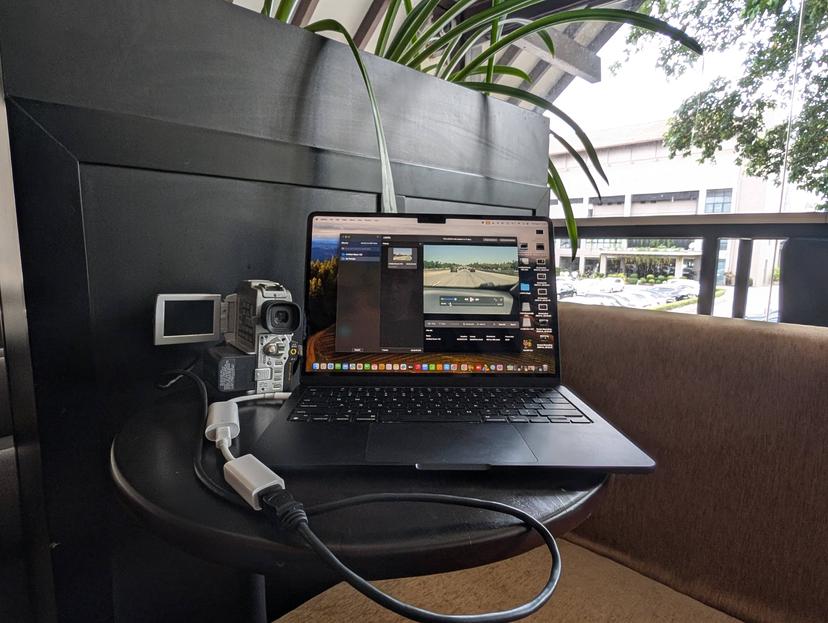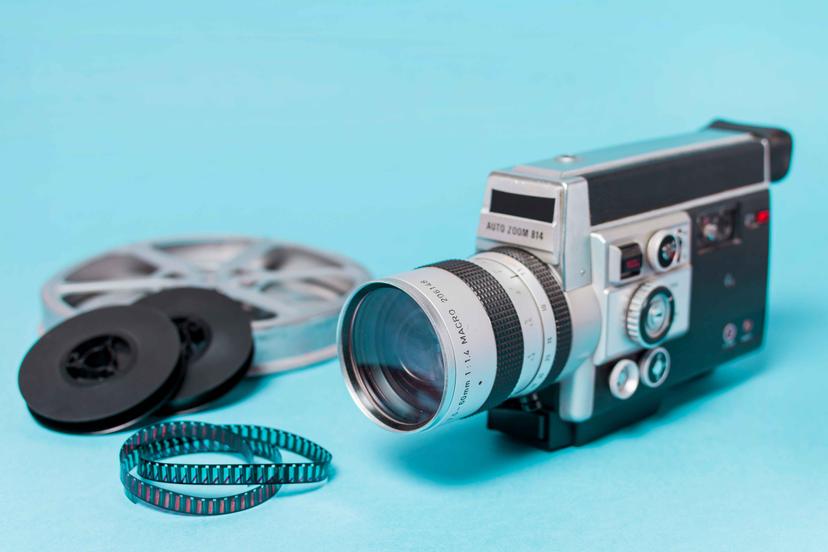leaving piles of outdated technology in its wake. From the Kinetoscope to the two-reel projector to the Super 8 to the iPhone, the tools keep changing but the images are everlasting. Here’s a brief history of 8mm/Hi8 tapes and some tips on converting them to more current formats.
Where did 8mm video come from?
The 8mm film format was introduced by the Eastman Kodak company during the Great Depression and released to the market in 1932 to create a home movie format that was less expensive than 16mm. Super 8mm film cameras were first manufactured in 1965 by Kodak for their newly introduced amateur film format, which replaced the original Standard 8mm film format.

If you’ve seen Spielberg’s sleeper hit Super 8, you’ll recognize the 1970’s camera obsessed over by the teenage protagonist. Super 8 was the cheapest film around and worked on cameras that started for under $30. Many families purchased Super 8 cameras to document birthdays, holidays and vacations. The camera was so lightweight that kids could use it too.
Manufacturing of Kodak’s Super 8 continued until the rise in popularity of video cameras in the mid 1970s. In 1985 Sony introduced Video8 which was an analogue video tape cassette format using 8mm tape, designed for use in 8mm camcorders.
The three formats of 8mm video
Most popular in the late 80’s and 90’s but now making a comeback in nostalgic TV shows and films, 8mm video came in three formats.

First is the original Video8 analog tape cassette format designed primarily for use in camcorders such as the Sony Handycam line. The resolution of Video8 is the same as VHS, but in terms of audio quality, Video8 comfortably outperformed non-HiFi VHS or Betamax.
In 1989, Hi8 was introduced as a better-quality version of Video8 using a combination of higher-grade tape and improved recording mechanisms to increase bandwidth.
A digital version, Digital8 was introduced in 1999 by Sony. Digital8 remained a consumer format and rose in popularity for home video. Most Digital8 camcorders can play back analogue Video8 and Hi8 tapes. The last Digital8 camcorder, the Sony DCR-TRV285, was discontinued in 2007.
Five methods for converting 8mm tapes
Whether you are using the camcorder to create retro-analog films or have a pile of tapes ready to be rescued, these are the top solutions for transferring 8mm tapes to digital:
1. Mail-in transfer services
You can use a mail-in videotape transfer service such as iMemories, Legacybox or Costco but this means you have to relinquish the ONLY copy of your irreplaceable property. You also have to sacrifice your privacy and pay fees (up to $20 per tape). And you’ll need to be patient. Most mail-in or drop off services take up to three weeks until you’ll get access to the digital files and even longer to get back your original materials.

2. Copy from your camcorder to VHS or DVD
Another method is to copy to VHS or DVD from you 8mm camcorder, then transfer from VHS or DVD to a digital file that you can store on your computer. This requires multiple devices, wires and connections that will leave you tangled and frustrated. There are converting machines you can buy such as the MovieMaker-PRO which can cost up to $400 and won’t capture sound from some formats.
3. Purchase an encoding device
Smaller devices like ClearClick, Elgato, Vidbox, Digitnow, Diamond, Roxio can convert 8mm. These are less expensive (from $36 - $119) but require that you have an 8mm video format camcorder to play the tapes back. You may not be satisfied with the quality of the transfer as lower quality encoding chips are used.

4. Re-record on a surface
Of course, you can always project the video onto a pristine surface and re-record a lifetime of recordings with your iphone or ipad. But who has time or space for this endeavor?
5. Use Mac Software such as LifeFlix
LifeFlix is easy to use and offers high-quality compression and HD conversion options. The founders spent over 20 years in the video technology industry and developed LifeFlix because iMovie no longer suNpported their camcorders. With this software, you just attach your old camcorder to your Mac with a FireWire cable. It needs to be a Digital8 camcorder which has a FireWire port and can also play Hi8 and Video8 tapes. (If you’ve lost the device you can get a used Digital8 camcorder on eBay for about $50).
Then once you launch LifeFlix, the tape starts to run and the capture begins. LifeFlix can detect when the tape starts and stops so it creates new scenes that you can label individually, trim or combine. There is one caveat that sometimes with old 8mm tapes this scene detection does not work. It’s a mystery we’re trying to figure out! After importing your old tapes you can do some editing and even now share it in iMessages, AirDrop and email.
If you are a Mac user and have an 8mm video camcorder, you can convert as many tapes as you like for $79.99. It’s the simplest converter that offers high quality transfer and editing options.

Most Popular
Join Our LifeFlix Community
Enter Your Email Address to Sign Up for Exclusive Updates!
Own your
memories
forever
withLifeFlix!
Related Blogs

How do I watch my old tapes?
Old tapes can be difficult to enjoy, but LifeFlix makes life easier by digitizing them. LifeFlix is an ideal solution for damage-free output.
Read More ➜

How to store old camcorder tapes
Keep tapes safe in a cool, dry place & digitize with LifeFlix to save memories.
Read More ➜